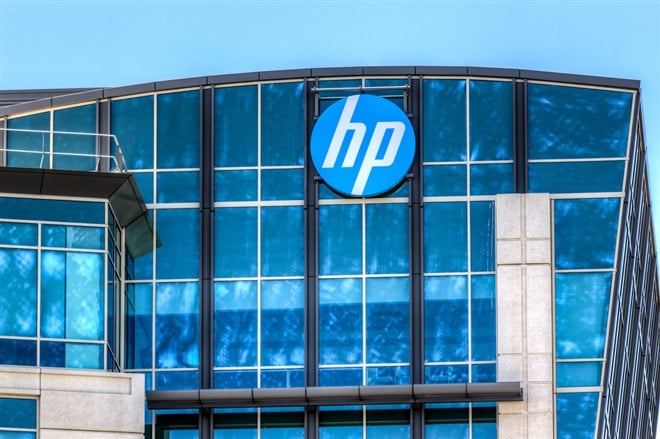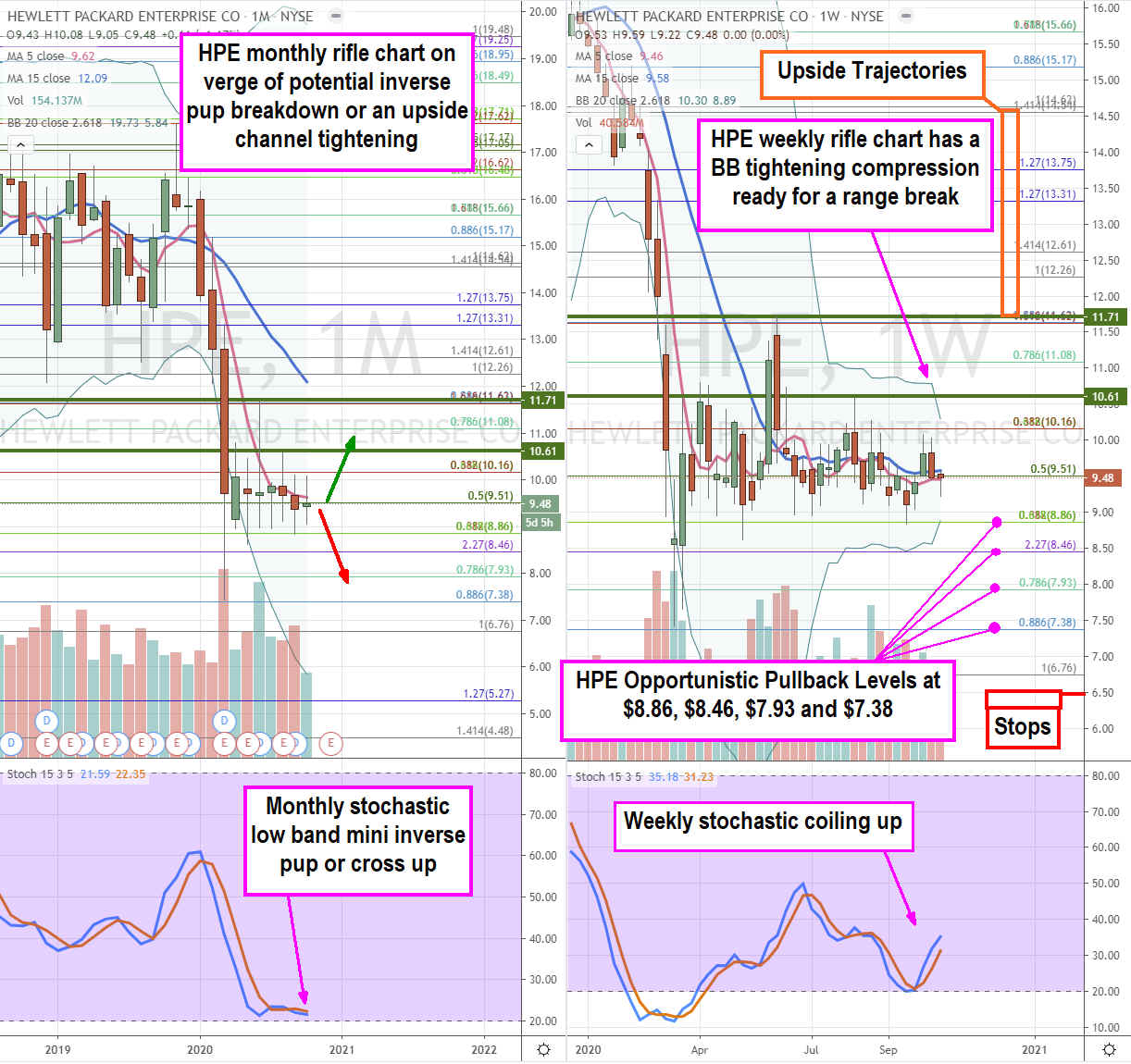
Enterprise computing giant
Hewlett Packard Enterprise Company (NYSE: HPE) stock is trading well below its February pre-Covid-19 levels while underperforming the benchmark
S&P 500 index (NYSEARCA: SPY). To avoid any confusion, Hewlett Packard Enterprise Company serves enterprise business clients and corporations with server products and cloud computing services.
HP Inc. (NYSE: HPQ) serves the consumer market with personal computers (PCs), laptops, printers and peripherals. HPQ shares are trading much better than HPE shares as the pandemic triggered
work-learn-play-at-home trend caused a surge in consumer PCs, tablets and peripherals demand. On the flipside, empty offices and employees working from home has hit the enterprise computing demand as indicated by the weakness in HPE shares. In theory, as economic restarts accelerate and workers return to offices, the
enterprise demand should expand while the consumer demand contracts. However, enterprise demand has actually improved causing HPE to raise its guidance, but shares have remained cheap and rangebound. Prudent investors can watch for opportunistic pullback levels during this compression to gain exposure ahead of an impending price expansion.
Q3 FY 2020 Earnings Release
On Aug. 25, 2020, HPE released its fiscal third-quarter 2020 results for the quarter ending July 2020. The Company reported an earnings-per-share (EPS) profit of $0.32 excluding non-recurring items versus consensus analyst estimates for a profit of $0.23, a $0.09 beat. Revenues fell (-5.8%) year-over-year (YoY) to $6.08 billion, still beating analyst estimates of $6.06 billion. The Company reduced backlog in the quarter by $500 million with supply chain improvements. Free cash flow rose 43% YoY to $924 million. HP raised Q4 EPS guidance to a range of $0.32 to $0.36 versus $0.31 consensus analyst estimates and raised full-year 2020 EPS guidance to a range of $1.30 to $1.34 versus $1.21 consensus estimates.
Silver Peak Integration
Investors fear that HPE lacks technology catalysts which can spur growth as the legacy hardware sales erode. The pandemic accelerated the migration to remote working and having technology to enhance remote workflows and end-user experience is a boon to its growing cloud servicing business. The $975 million all-cash acquisition of Silver Peak in July 2020 is a further acceleration tool. Silver Peak is a top player in the software-defined-wide-area-network (SD-WAN) segment which enhances workflows for enterprise cloud applications. This enables workers to securely and smoothly operate enterprise cloud applications remotely without bottlenecks or packet loss as the SD-WAN determines optimal transport based on application. This is a complementary service for its Aruba networks clients to improve end-user experience and productivity. Integration will take some time, but the acquisition immediately adds Silver Peak’s roster of 1,500 enterprise clients to the HPE ecosystem.
Upside FY 2021 Guidance Forecast
On Oct. 15, 2020, HPE reaffirmed fiscal FY 2020 EPS guidance in the range of $1.30 to $1.34 (as previously announced) and provided upside FY 2021 EPS in the range of $1.56 to $1.76 excluding recurring items versus consensus analyst estimates of $1.46. Keep in mind pre-COVID full-year 2020 EPS guidance was around $1.78. The Company is accelerating its edge-to-cloud platform as-a-service company. HPE is on track with net annualized run-rate cost savings of $800 million by year-end FY 2022. The Company expects compound annual growth rate (CAGR) revenue growth of 1% to 3% annually driven by Edge and high performance mission critical systems as-a-service products. HPE forecasts 3-year CAGR free cash flow growth of 50% or north of $2 billion expected by FY 2023. This update appears to indicate a return to normalcy prior to the pandemic, rather than raising the bar higher as illustrated by the price reaction dropping shares from $10.20s to $9.20s. Prudent investors can use the opportunity to find opportunistic pullbacks.

HPE Opportunistic Pullback Levels
Using the rifle charts on the monthly and weekly time frames provides a broader view of the landscape for HPE stock. The monthly rifle chart has been in a bearish downtrend with the 5-period moving average (MA) rejecting each bounce attempt causing the initial monthly stochastic cross up attempt to reject back down. The 5-period MA is closing in at the $9.51 Fibonacci (fib) level. Another rejection off the monthly 5 period MA combined with a weekly stochastic cross down can trigger the monthly inverse pup breakdown. The weekly rifle chart illustrates the $1.50 to $2.00 price range that HPE has been chopping within. The weekly Bollinger Bands (BBs) are now turning inward which implies price compression ahead of a range expansion breakout or breakdown. The weekly stochastic has coiled up again the moving averages are tight. A weekly market structure low (MSL) buy triggers at $10.62 followed by a monthly MSL trigger at $11.72. The bullish case would be that double springboard pop to trigger both weekly and monthly MSLs. The bear case would be a weekly stochastic cross back down triggering the monthly inverse pup breakdown. Usually, both sides like to play possum until range are tested and deflected into a reversal. This can present opportunistic pullback levels at the $8.86 fib, $8.46 fib, $7.93 fib and the $7.38 fib. The upside trajectories range from the monthly MSL at $11.71 up to the $14.62 fib. Since the monthly chart is a potential breakdown, it’s prudent to keep stops under $6.50.
Companies in This Article: